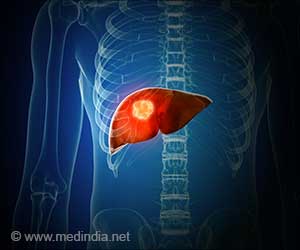A new MIT project, reported in the latest Nature Nanotechnology, aims to make Western blotting an old-fashioned technique
A new MIT project, reported in the latest Nature Nanotechnology, aims to make Western blotting an old-fashioned technique.
The microchip system has an extremely tiny sieve structure built into it that can sort through continuous streams of biological fluids and separate proteins accurately by size. Conventional separation methods employ gels, which are slower and more labor-intensive to process. The new microchip system could sort proteins in minutes, as compared to the hours necessary for gel-based systems.The new technology is an advance from a one-dimensional sieve structure reported by the same MIT group last year. The key to this new advance, called an anisotropic nanofluidic sieving structure, is that the researchers have designed the anisotropic sieve in two orthogonal dimensions (at a right angle), which enables rapid continuous-flow separation of the biological sample. This allows continuous isolation and harvesting of subsets of biomolecules that researchers want to study. And that increases the probability of detecting even the smallest number of molecules in the sample.
"With this technology we can isolate interesting proteins faster and more efficiently. And because it can process such small biologically relevant entities, it has the potential to be used as a generic molecular sieving structure for a more complex, integrated biomolecule preparation and analysis system," said Jongyoon Han, the Karl Van Tassel Associate Professor of Electrical Engineering and associate professor of biological engineering at MIT and head of the MIT team.
Han noted that until the late 1990s, most advances in biological laboratory equipment were aimed at the Human Genome Project and discoveries related to DNA, which are larger molecules compared to proteins. However, because of the vital role proteins play in almost all biological processes, researchers began to focus their attention on proteins. But one obstacle has been the lack of good laboratory tools with which to prepare biological samples to analyze proteins, said Han, who also has affiliations in MIT's RLE, Computational and Systems Biology Initiative, Center for Materials Science and Engineering and Microsystems Technology Laboratories.
"I shifted my attention from DNA into the area of protein separation around 2002 with the shift to proteomics (the study of proteins)," Han said. "But the field was using decades-old gel electrophoresis technology. There is a big gap in the need for technology in this area."
Han and Fu therefore devised the anisotropic sieve that is embedded into a silicon chip. A biological sample containing different proteins is placed in a sample reservoir above the chip. The sample is then run through the sieve of the chip continuously. The chip is designed with a network of microfluidic channels surrounding the sieve, and the anisotropy (directional property) in the sieve causes proteins of different sizes to follow distinct migration trajectories, leading to efficient continuous-flow separation. The current sieve has an array of nanofluidic filters of about 55 nanometers, or billionths of a meter, wide.
Advertisement
While other scientists have used similar continuous flow techniques to separate large molecules like long DNA, the MIT team succeeded with the tinier proteins. "This is the first time physiologically relevant molecules like proteins have been separated in such a manner," said Han. "We can separate the molecules in about a minute with the current device versus hours for gels."
Advertisement
Source-Bio-Bio Technology
SRI






